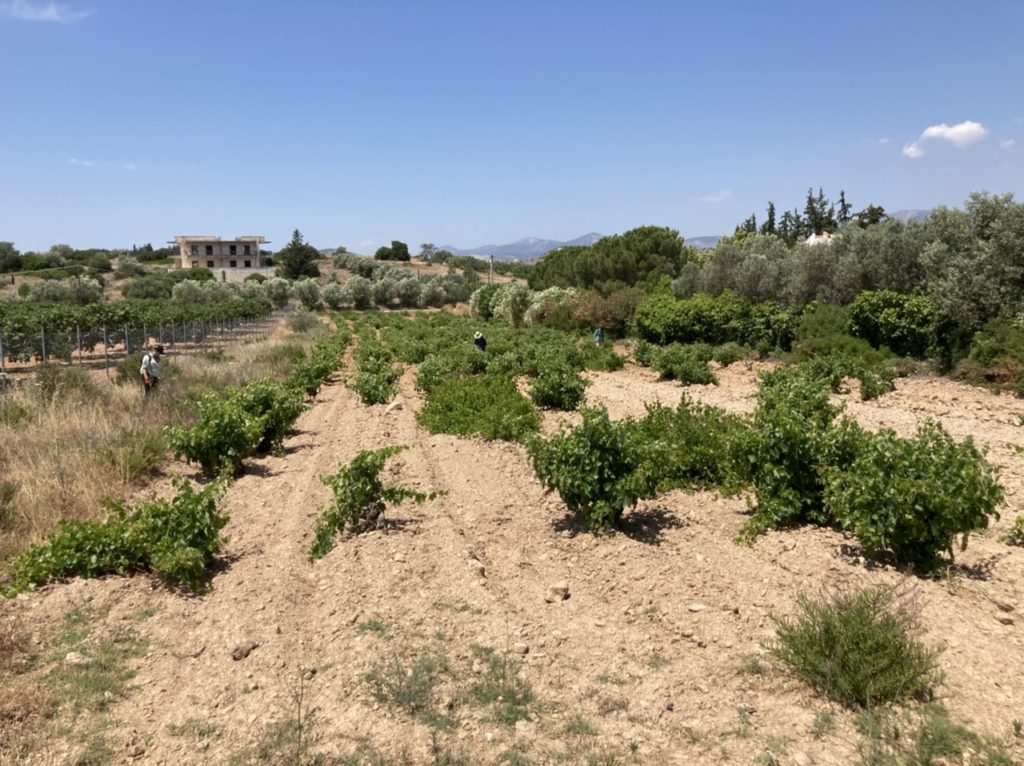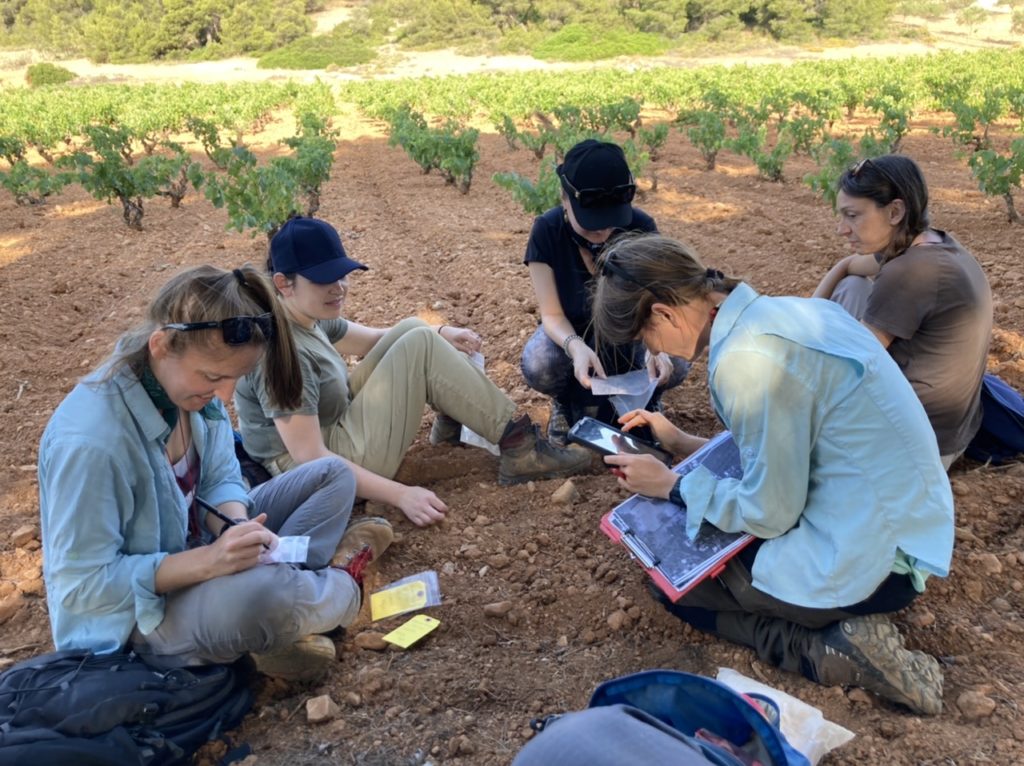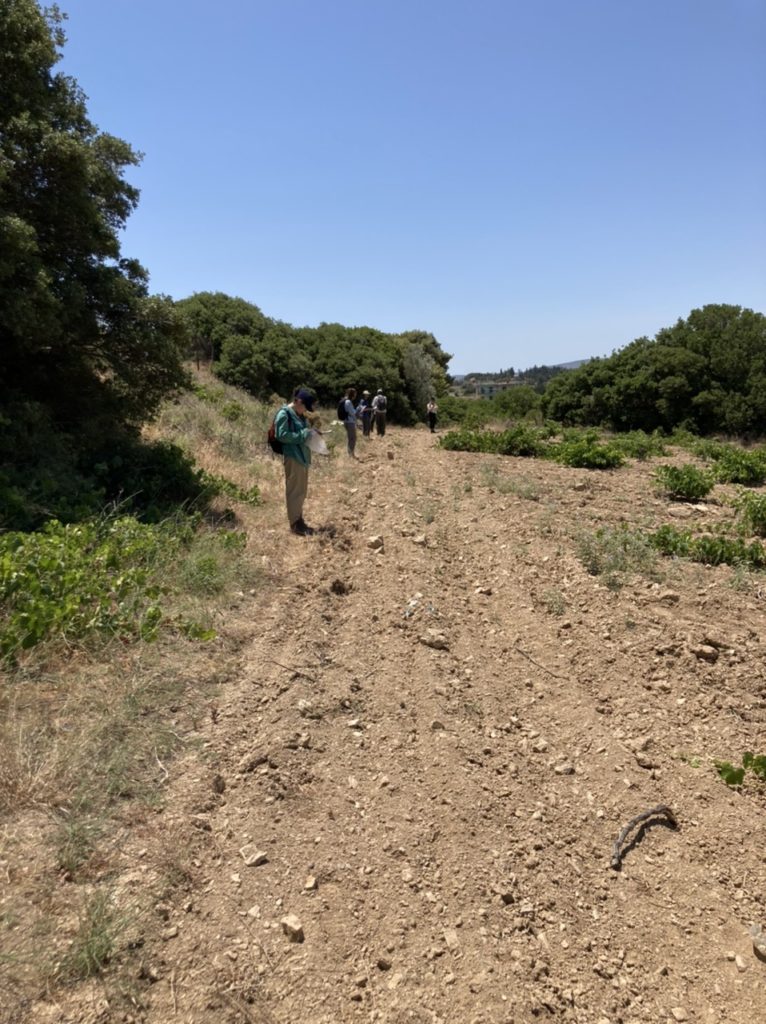As part of the 2022 field season, BEARS is expanding its search for ancient activity in Porto Rafi beyond the inner bay and islands. The “town survey”, as it’s called, is being led by the fearless Maeve McHugh and is focused on documenting parts of the ancient landscape that are a bit more distant from the beautiful waters of the Porto Rafti bay. This includes the urban core of Porto Rafti as well as agricultural fields that surround the city—a landscape diverse in vegetation and modern habitation. The goals of the town survey are different from the surveys of Praso, Raftis, Pounta, and Koroni. From the town survey, we hope to gain a better understanding of the relationship between our well documented bay sites (e.g. Raftis) and important settlements in east Attica outside our survey zone, such as the sanctuary at Brauron. The town survey also has the potential to shed light on land use in the “chora” (countryside) of the two Athenian demes that inhabited the bay of Proto Raftis (Steiria and Prasiae). Additionally, the survey will help define settlement patterns of the Bronze Age and Late Roman period, time periods that we have already documented on the islands.




